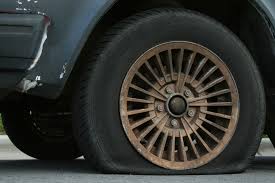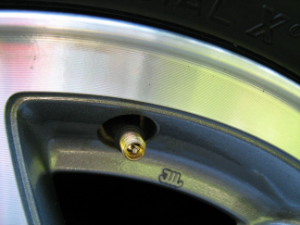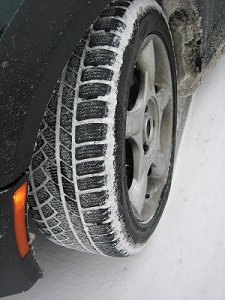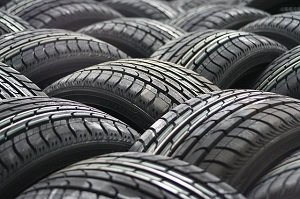Posted on 6/16/2016

Nobody ever looks forward to a flat tire, and nobody ever says "well, that was a really good time" after having one. You can at least minimize the damage to your tire and danger to yourself, though.Flats vs BlowoutsIf you get a blowout, you'll know about it right away. Sometimes the tire can fail dramatically, with a bang as loud as a shotgun going off. Other times, it might just be a loss of air and a sudden change in your car's handling, followed by vibration, noise and a pull to one side. If it's a front tire that fails, your car might be a real handful to drive until you can get to a stop.In either case, your first job is to pull off the road as quickly (but safely!) as you can. Don't jam on the brakes or make any sudden moves, just get over to the shoulder and the flattest, hardest surface you can find.Turn on the emergency flashers and set the parking brake. Locate the jack and tire wrench, remove the wheel cover and break loose the lug nuts with the wrench. Find the proper spot ... read more
Posted on 3/31/2016

Driving around on underinflated tires is just a bad idea all the way around. Underinflated tires increase a car’s rolling resistance, meaning a drop in fuel efficiency since it takes more energy to move the vehicle down the road.A single tire that’s down by ten pounds of air means a 3.3 percent drop in fuel economy…multiply that by all four tires, and you can figure on giving up ten percent of your gas mileage. The added friction and rolling resistance also means more heat is generated, and heat is the enemy of the internal structure of a tire. That heat will damage a tire to the point of failure. Studies show that underinflated tires are a full 25 percent more likely to fail, and at least half of one-car accidents involve a tire problem as a factor. And still, it’s estimated that 60 to 80 percent of the vehicles on the road are rolling on tires that are low on air.The tire pressure monitoring systems on newer cars are all well and good, but what can be done to ... read more
Posted on 12/31/2015

In a lot of parts of the country, the winters are tough enough that all-season tires just won’t get the job done. All-season tires are a compromise; they offer good year-round traction with a quiet ride, good handling and road manners. They tend to perform well in wet weather and light wintry conditions, but when the snow is more than a couple of inches deep, all-season tires are out of their league. That’s when it’s time to consider winter tires. Today’s winter tires are a long way from the heavy, noisy, clumsy “snow tires” or “mud grips” that your dad might have had on his station wagon 40 years ago. Modern winter tires are designed for noise, handling, steering response and road manners that rival grand touring tires, only with enhanced traction. They accomplish that with deeper, more aggressive tread grooves and a tread pattern that’s designed to eject snow and slush for a clean “bite” with every revolut ... read more
Posted on 11/26/2015

Where did this year go? Before you know it, it’s going to be time for the holidays, and that can mean travel in some pretty trying conditions (and we don’t just mean restless kids in the back seat). Is your vehicle ready for some interstate miles? • Tires: It’s a good idea to have your tires rotated every 5,000-7,000 miles to ensure even wear. With that in mind, it’s easy to just schedule a tire rotation with every oil change, since the vehicle will be up in the air on a lube rack anyway. Have you checked your inflation lately? Your proper inflation levels will be on a sticker on the driver’s side door frame, inside the fuel filler door or in the owner’s manual – always check the inflation when the tires are cold. How about the tread depth? 2/32” is the minimum tread depth allowed in most states. Here’s an easy way to check your tread depth: take a penny and insert it into the tread grooves, Lincoln head down ... read more
Posted on 11/12/2015

Winter tires versus all-season tires…which is the right choice for you? The two designs are quite different and deliver different levels of performance and winter-weather traction, so let’s discuss. • All-season tires are designed as an all-around compromise. They feature a tread pattern that evacuates water from the tire’s contact patch to prevent hydroplaning, with plenty of small, textured slits (sipes) to add extra biting edges for traction in wet or slushy conditions. • All-season tires are designed with a harder tread compound that can deliver a long service life and long wear. • All-season tires can deliver the same sort of low noise, comfortable ride and good handling as most touring or grand-touring tires. They offer straight-line stability, good road manners and good road feel on asphalt. Now, let’s compare-and-contrast all-season tires with winter tires… • Winter tires use a softer tre ... read more